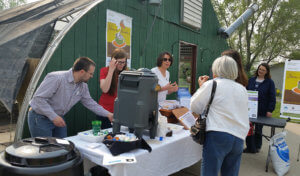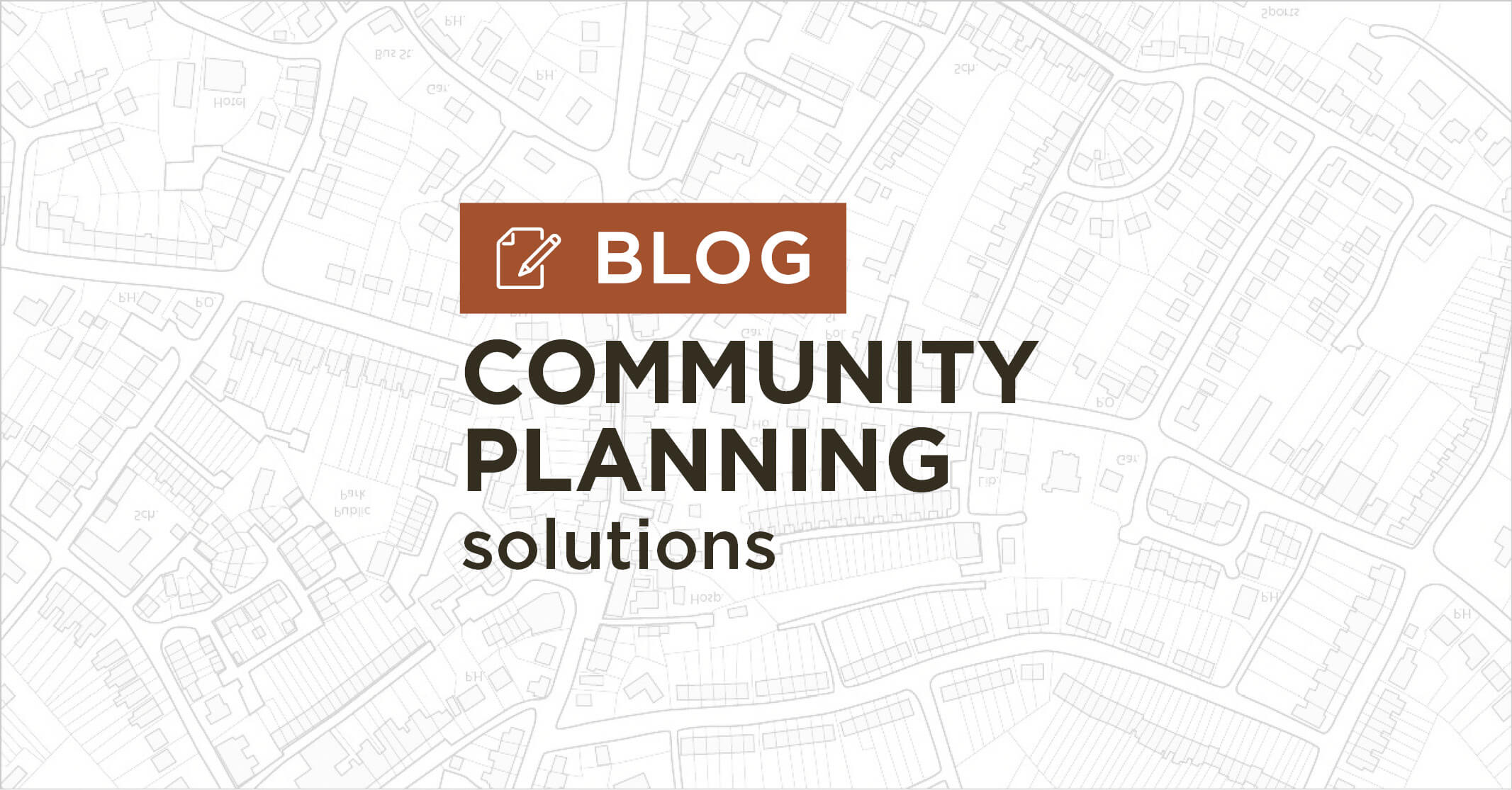National Community Planning Month
Established by the American Planning Association (APA), National Community Planning Month is celebrated each October to recognize the role of planners and the importance of their work. Snyder & Associates is proud to join the APA and colleagues from across the country to commemorate the countless benefits thoughtful planning provides for our livelihoods and communities.
As the world emerges from the disruptive changes brought about by the pandemic, this year’s theme revolves around the vital contribution that sound planning continues to make as planners help lead the way forward. From where we live to how we commute and experience the world around us, now more than ever, effective planning generates a resounding impact on our day-to-day lives.
Snyder & Associates Hands-On Approach to Community Planning

Conducting public meetings in a familiar environment can significantly boost attendance and foster meaningful connections with the local residents, ultimately leading to a deeper understanding of their needs.
Effective community planning can influence future development, preserve the environment, stimulate the economy, and provide a framework for city officials to make decisions. At the heart of our planning efforts is a comprehensive approach that recognizes the complex relationship between economic, physical, and social factors. For the planners at Snyder & Associates, this effort involves learning how a community has changed over several decades while at the same time defining a public vision from numerous, often conflicting, perspectives in a rapidly evolving world.
Our team incorporates a civic engagement strategy as their number one planning tool to make this happen. This allows us to learn about issues firsthand from people who experience the built environment daily. This invaluable input helps our team identify each community’s unique characteristics, visions, and goals.
The very nature of planning means that a comprehensive approach will cover multiple topics for any one community. These topics could include transportation, housing, and/or economic development. Alternatively, you can develop a topic-specific plan to protect an individual watershed or improve community health.
Adding to the unique and varied nature of community planning is how drastic projects vary in size and scope. Projects can be statewide, regional, or pertain to an individual city or county. Planning efforts can even be tailored for a particular neighborhood or transportation corridor within a community.
Yet, no matter the size of the project or the topic it addresses, civic engagement that includes all members of the public is critical to effective community planning. The only way to create an effective plan to address the real issues is to ask the people who live, work, and recreate there.
Encouraging Civic Engagement through Strategic Efforts
While there are virtually unlimited ways to engage the public or structure an information-finding session, our team has established numerous successful tactics they continually use for the best results. Here are the top preferred strategies our planning team regularly employs for constructive public engagement:
- Identify stakeholder groups and leaders in the community to help rally support and input.
- Use multiple modes of communication, including letters, signs, and social media. Online platforms that can be easily accessed via mobile devices are becoming increasingly popular.
- Hold “pop-up” workshops where people already are, such as local festivals or major shopping areas.
- Encourage people to get involved in their communities and local governments at a younger age. The “If I Were Mayor” Essay Contest is an excellent example of engaging today’s youth.
- Make it fun! Have a neighborhood picnic, open house, or create a game or contest to get people interested and excited to participate. From planning community tours, photo contests, and mayoral proclamations, community planning works best when viewed as fun.
Planning for Resilience in Community Development
Effective community planning is crucial in how we experience and interact with the world around us. It can foster growth and resilience essential to maintaining a vibrant, livable community. The diverse team of engineering and planning experts at Snyder & Associates understand the significant effect planning has on the world around us and how it impacts most of our in-house disciplines.
Quite simply, planning brings all other professions together. The planning process encompasses everything from how garbage is collected to how to deter crime with site design and how to infiltrate stormwater or provide access to public transit. A community comprises multiple elements, each being brought together under the planning umbrella.
As Transportation Business Unit Leader Wade Greiman, P.E., says, “We can get caught up trying to fix a problem before we know what it is. For example, if job centers are closing in a region, we may focus on the symptoms of why they’re closing and why people are moving away. But jobs are only one variable of community success. Housing, retail variety, recreational opportunities, and infrastructure must also be addressed to overcome economic challenges. Solving one variable doesn’t solve all problems. Balance is essential. We bring all necessary experts to help solve these complex problems.”
Community planners have a unique way of connecting services, programs, and improvements into a coordinated system that provides people with choices. This allows individuals to tailor how they experience their community and gain the support needed to lead a fulfilling, active lifestyle.
Innovation Plays a Key Role in Community Planning
An innovative planning approach is essential in obtaining representation from all groups within a community and developing a plan that addresses their needs. Mr. Greiman states, “Smart planning builds the case for action to achieve specific goals. While it may be comfortable to work with people you know and can anticipate, it can stifle innovation and hinder progress. Utilizing an innovative approach at every step of the planning process creates opportunities for differing opinions to work collectively toward a common goal. When diverse views or interests collaborate to achieve a productive outcome that aligns with the goal of a plan, it can foster solutions that support community resilience for decades.
Seasoned Professional Engineer Rich Voelker, P.E. expands on that sentiment. “When I think about the future of transportation, I’m excited about innovations that will improve safety, foster equitable mobility, and help protect the natural environment. For example, I expect car-sharing systems to expand in availability and popularity, autonomous vehicles will one day be the norm, and drones will deliver our packages. These innovations will reduce traffic congestion and crashes while expanding mobility options for everyone.”
Further, the increasing use of innovative technologies has increased the use of mapping and wayfinding in planning efforts. Using technology to inform users about the history of an area, along with what services are available and where will be an essential part of community planning as time goes on. In addition, a significant movement towards more active lifestyles promotes improved connectivity through multi-use trails. More focus on healthy lifestyles requires more park, trail, and athletic facility designs.
The Snyder & Associates planning team enjoys learning about our client communities’ challenges and designing the right approach that empowers stakeholders to tackle those challenges through unique communication strategies. With each project, we understand more about the communities we serve and gather a greater appreciation for what’s holding them back and what’s contributed to their success. Focusing on the positives has provided the best results, but addressing restraints head-on can set a community apart. Let our team help put your community on the right path for a successful future.
